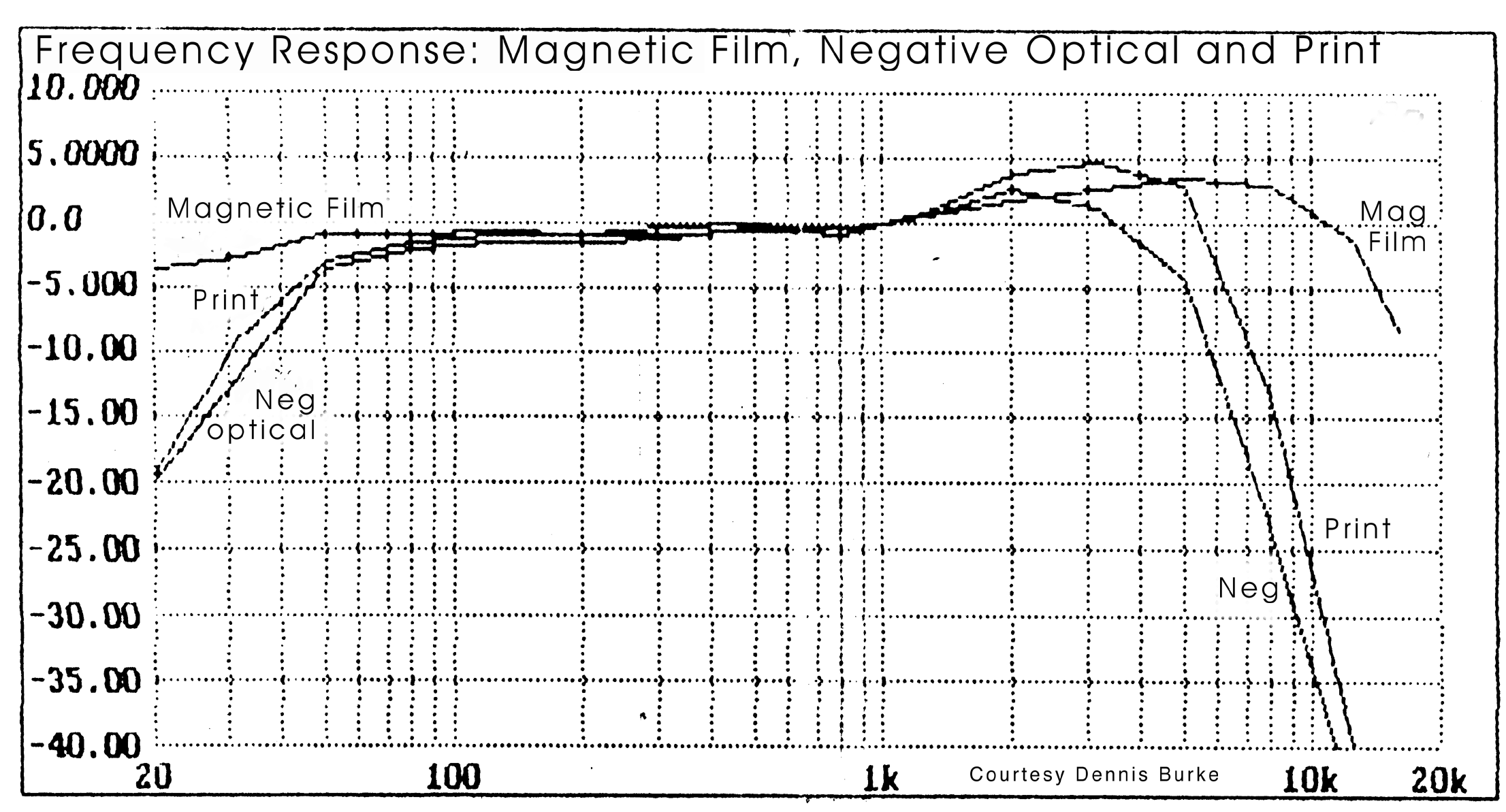| Optical Soundtrack |
| Most
films, with the exception of 35 and 70 mm prints for first release Hollywood
films and “Imax” productions, use some form of optically encoded soundtrack.
Essentially the system is based on a light beam from a lamp of constant intensity being passed through the edge of the film where the optical soundtrack causes the beam to be modulated. A photocell, a device which transduces light energy to electrical energy, changes this fluctuating image into an electrical signal which should (ideally) resemble the electrical signal of the mix. The optical track is essentially a picture of the complex waveforms which comprise the soundtrack. The light may be modulated by varying the area of the track or by varying the density of the track; the former being today’s standard. Either of these systems are inherently noisy - any scratches or anomalies from the development process will adversely affect the signal. In addition to problems caused by poor focus, print density or slippage during the printing process, playback is also problematic with badly calibrated projectors tending to be the norm, especially with 16 mm systems. The signal to noise ratio for 16 mm is 35 - 40 dB and the frequency range 90 Hz to 6,500 Hz. This is very disappointing when one considers the 90 dB and 20 - 20 kHz specifications of the master DAT. 35 mm optical systems fair much better with greater track width, film speed and the addition of Dolby. The slower track speed of 16 mm plus problems with sprockets sticking causes it to often have a great deal of wow and flutter. |
